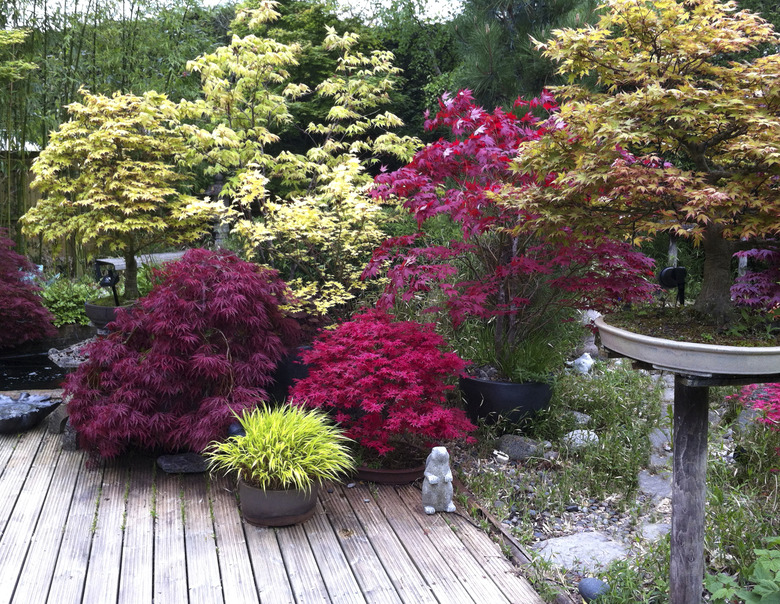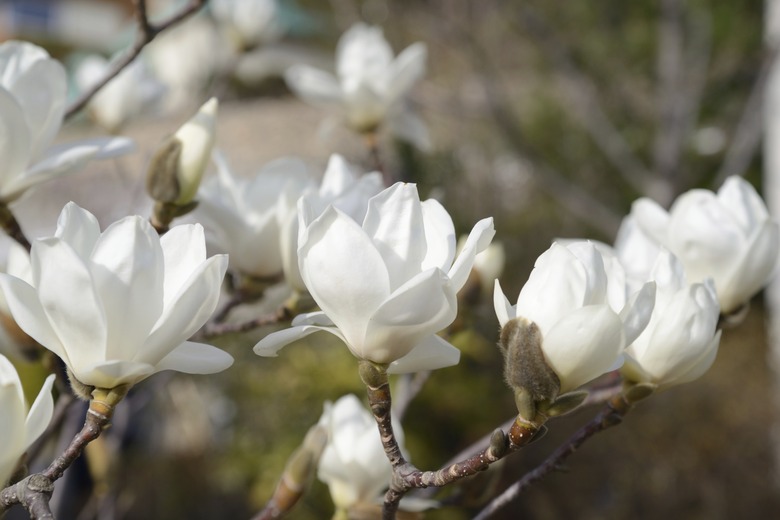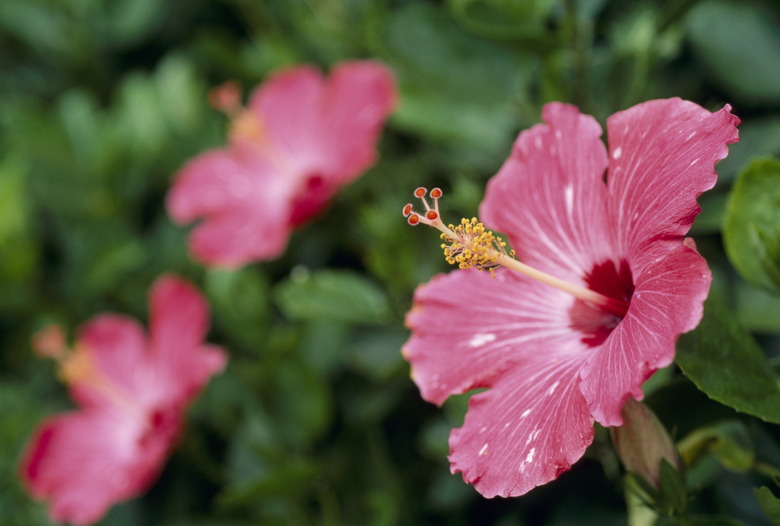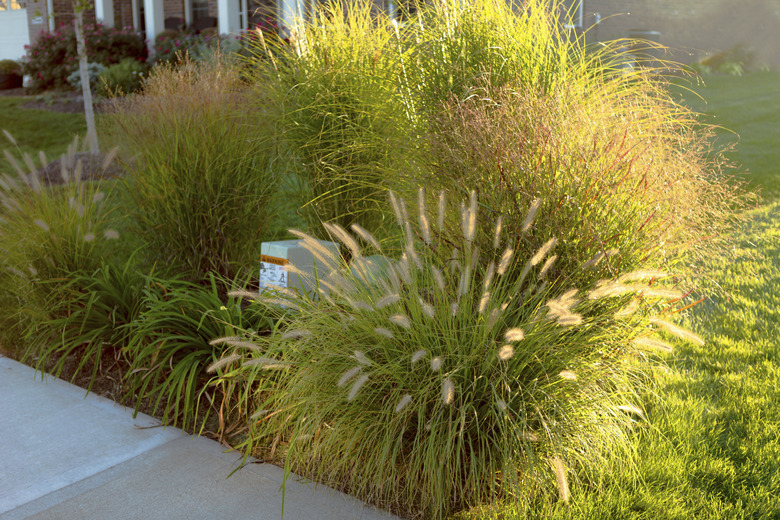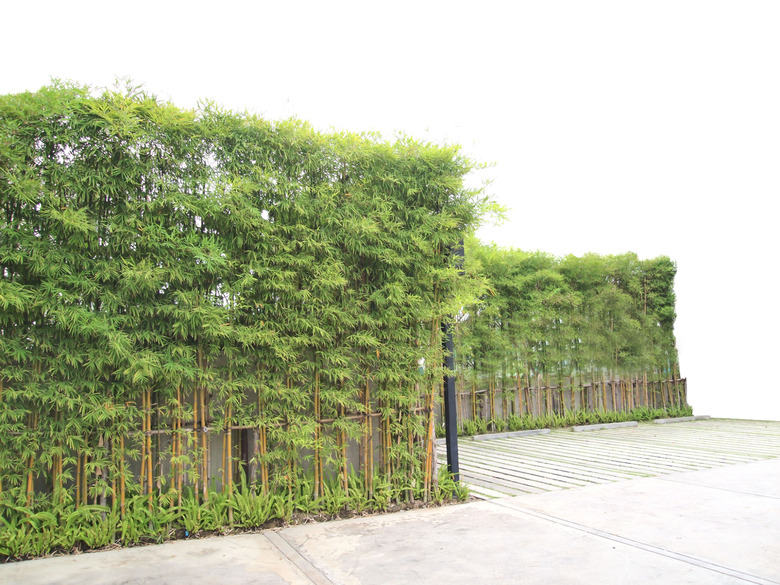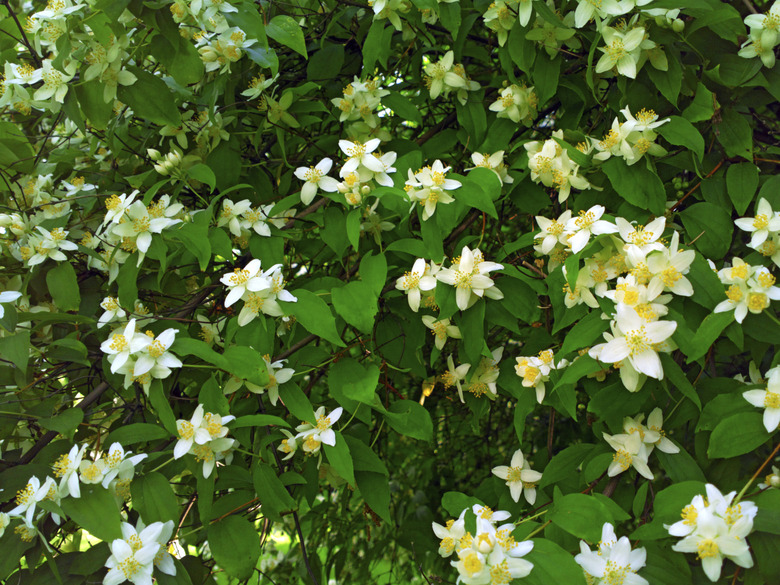Tall Plants For A Privacy Fence
Trees, shrubs, ornamental grasses, bamboos and vines can all provide privacy in a garden. Evergreen plants are best for year-round color and screening. A hedge of multi-stemmed trees or shrubs is an effective privacy fence and gives a formal look, but hedges must be pruned at least once each year to keep their shape. Ornamental grasses and bamboos require less work and provide movement as they sway in the wind. Vines can also give privacy when grown on a trellis or lattice.
Trees
Trees provide privacy in large gardens and are effective windscreens. Cabbage tree (Cordyline australis), for example, grows 6 to 15 feet tall and 3 to 6 feet wide, and it can grow as a multiple-trunked tree. Hardy in U.S. Department of Agriculture plant hardiness zones 9 through 11, cabbage tree features sword-shaped, gray-green evergreen leaves that are 3 feet long and 2 to 3 inches wide. Its clusters of small, fragrant, white flowers appear from late spring through summer.
Another option is sweet bay magnolia (Magnolia virginiana var. australis), which is hardy in USDA zones 5 through 10. It bears 2- to 4-inch-wide, creamy white, cup-shaped, fragrant flowers in spring and occasionally in summer. Growing 15 to 60 feet tall and wide, sweet bay magnolia is evergreen in warm climates. In cooler areas, it loses its leaves for winter and grows as a multi-stemmed shrub.
Shrubs
Shrubs grown as a hedge create an effective informal or formal privacy fence. Suitable shrubs include **Chinese hibiscus (Hibiscus rosa-sinensis)**, a loose, open bush that offers glossy, dark-green, evergreen leaves and 4- to 8-inch-wide red flowers year-round. Chinese hibiscus is hardy in USDA zones 9 through 11 and grows 4 to 10 feet tall and 5 to 8 feet wide.
Foster holly (Ilex x attenuata "Fosteri"), hardy in USDA zones 6 through 9, is another suitable shrub for a hedge. It grows 20 to 30 feet high and 10 to 20 feet wide, and its leaves are evergreen, glossy, dark olive and have tiny teeth. A female foster holly bears its bright-red berries without any need for a male foster holly to act as pollinator.
Ornamental Grasses
A privacy fence of ornamental grasses can be colorful and practical because many ornamental grasses need to be pruned only once each year, in late winter. Such ornamental grasses include big blue stem (Andropogon gerardii), the leaves of which emerge blue-green or gray in spring, mature to red-tinged green and turn reddish-bronze in fall. The plant's purplish, fingerlike flower clusters rise above the leaves in late summer. Big blue stem grows 4 to 6 feet tall and 2 to 3 feet wide, and it is hardy in USDA zones 4 through 9.
Silver plume grass (Erianthus alopecuroides), also an ornamental variety, is named for its silvery flower plumes that appear in late summer and remain until winter. This grass has no serious disease or insect problems. Hardy in USDA zones 6 through 10, silver plume grass grows 3 to 10 feet tall and 3 to 5 feet wide.
Bamboos
Bamboos make a low-maintenance privacy fence, providing they are clumping, not running, varieties. Running bamboos are invasive because they spread quickly, and so they should be grown in containers or within barriers. Clumping bamboos, however, spread only a few inches per year. Two varieties of clumping bamboo are Sunset Glow bamboo (Fargesia rufa) and scabrida bamboo (Fargesia scabrida
Sunset Glow bamboo features orange-red nodes on green stems. Nodes are the raised areas where leaves appear. Sunset Glow bamboo is hardy in USDA zones 5 through 9 and grows up to 8 feet tall.
Scabrida bamboo, hardy in USDA zones 6 through 9, offers long, narrow, emerald-green leaves and grows 12 to 15 feet tall and 8 feet wide.
Vines
Stakes with trellis or lattice attached to them can support a privacy fence of vines such as coral vine (Antigonon leptopus ) or common jasmine (Jasminum officinale).
Coral vine bears pink to white blooms from late summer through fall. In one growing season, it grows 8 to 10 feet tall and 3 to 6 feet wide. Coral vine is hardy in USDA zones 8 through 11. In USDA zones 9 through 11, it is evergreen and can grow up to 40 feet.
Common jasmine grows 20 to 30 feet tall and 7 to 15 feet wide, and it is hardy in USDA zones 7 through 10. It loses its leaves for winter, but its sprawling, twining stems provide privacy even when they are bare. Common jasmine's flowers are highly fragrant and appear from early summer through fall.
References
- Missouri Botanical Garden: Hibiscus Rosa-Sinensis
- Missouri Botanical Garden: Ilex x Attenuata "Fosteri"
- Missouri Botanical Garden: Cordyline Australis
- Missouri Botanical Garden: Magnolia Virginiana Var. Australis
- Missouri Botanical Garden: Andropogon Gerardii
- Missouri Botanical Garden: Erianthus Alopecuroides
- Monrovia: Sunset Glow Bamboo
- Monrovia: Scabrida Bamboo
- Missouri Botanical Garden: Antigonon Leptopus
